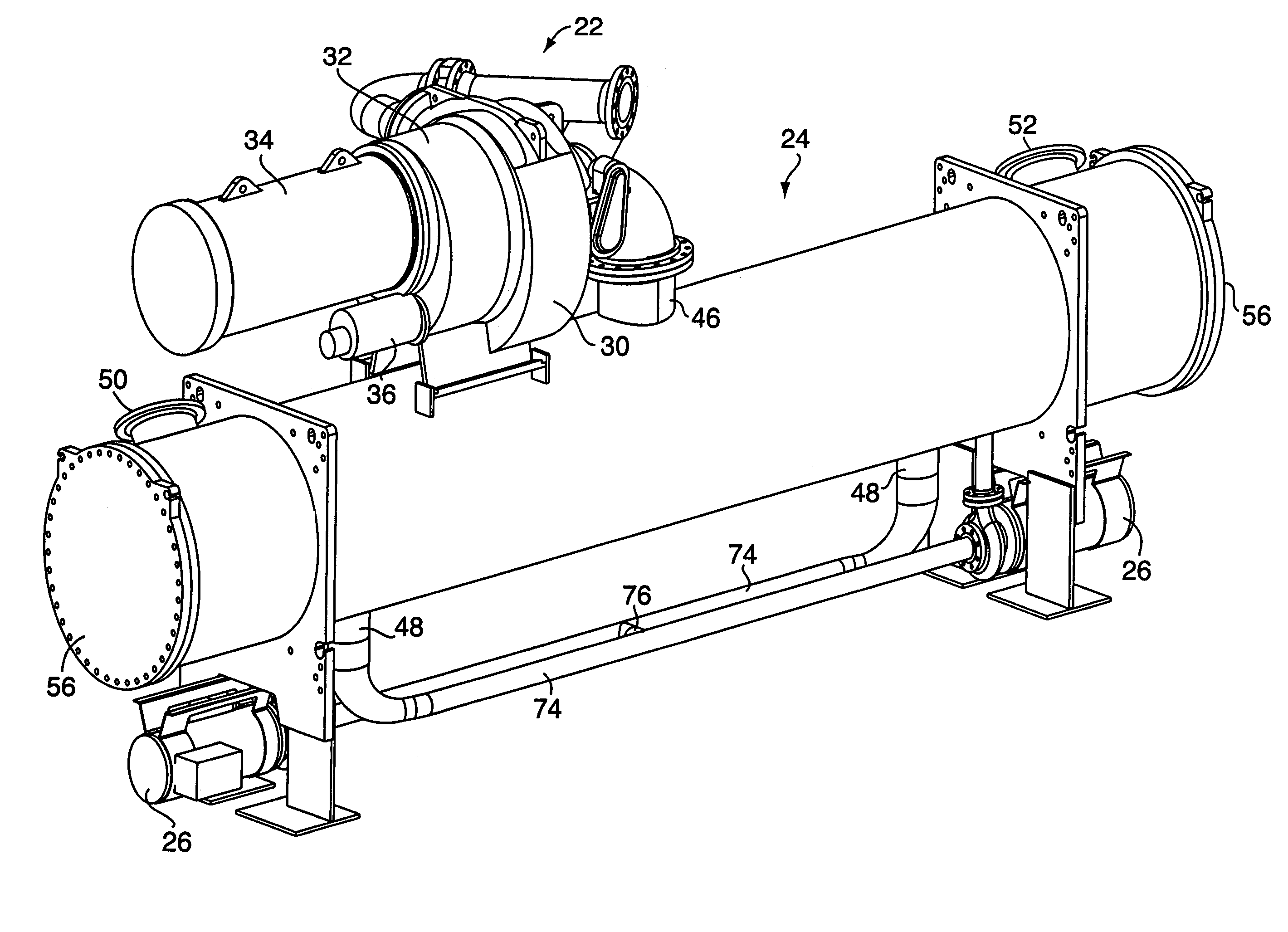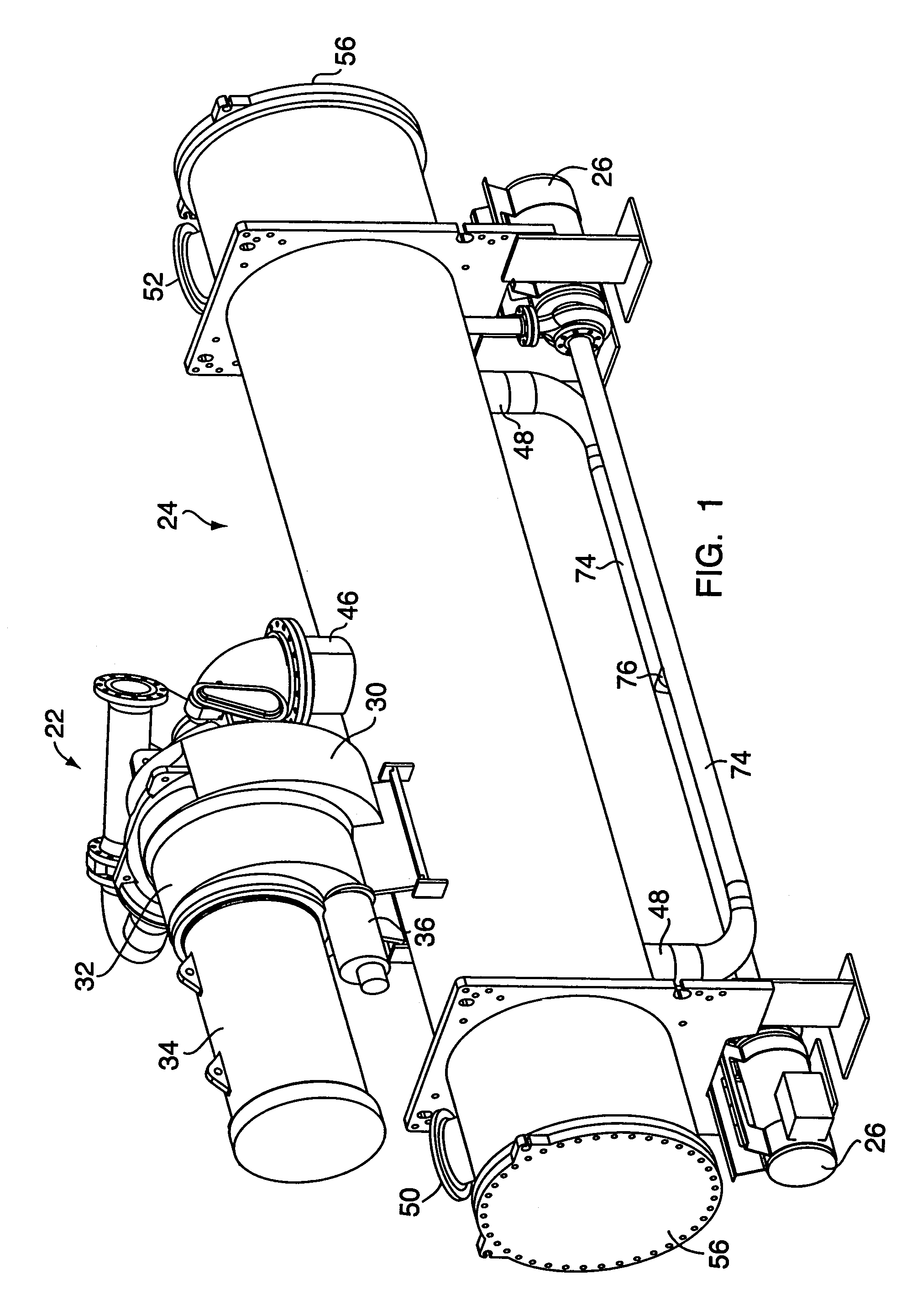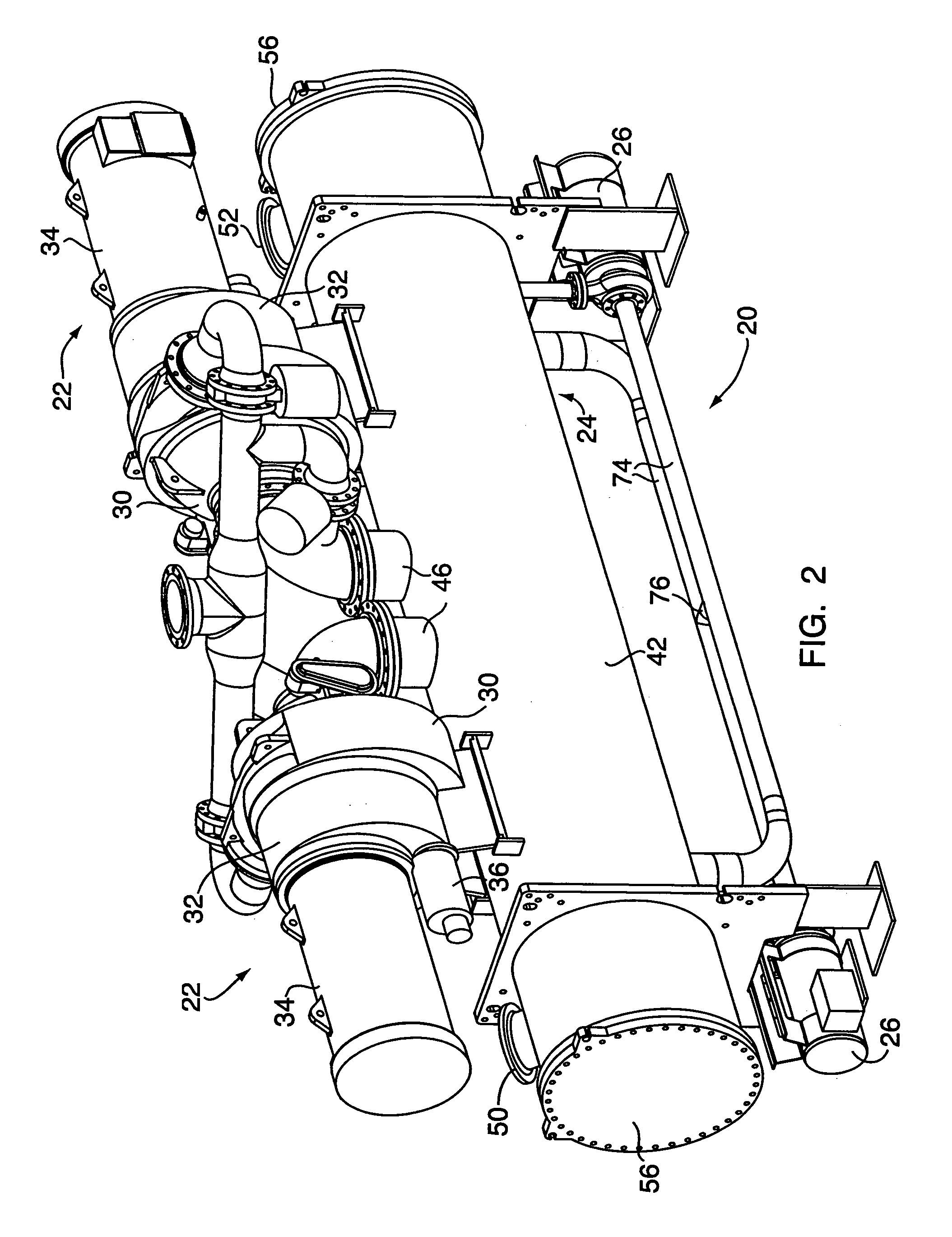Method and apparatus for decreasing marine vessel power plant exhaust temperature
a technology for marine vessels and power plants, applied in marine propulsion, lighting and heating equipment, vessel construction, etc., can solve the problems of substantial, undesirable thermal signals of marine vessels, and achieve the effect of less fuel, reduced fuel reserve requirements, and the same rang
- Summary
- Abstract
- Description
- Claims
- Application Information
AI Technical Summary
Benefits of technology
Problems solved by technology
Method used
Image
Examples
Embodiment Construction
[0025]Referring to FIGS. 1–6, the present method and apparatus for reducing the exhaust temperature of a marine vessel power plant includes providing an organic Rankine cycle (ORC) device 20 for waste heat utilization. The ORC device 20 includes at least one of each of the following: 1) a turbine coupled with an electrical generator (together hereinafter referred to as the “turbo-generator 22”); 2) a condenser 24; 3) a refrigerant feed pump 26; 4) an evaporator 28; and 5) a control system. The ORC device 20 is preferably a closed “hermetic” system with no fluid makeup. In the event of leaks, either non-condensables are automatically purged from the device 20 or charge is manually replenished from refrigerant gas cylinders.
[0026]The ORC device 20 uses a commercially available refrigerant as the working medium. An example of an acceptable working medium is R-245fa (1,1,1,3,3, pentafluoropropane). R-245fa is a non-flammable, non-ozone depleting fluid. R-245fa has a saturation temperatu...
PUM
 Login to View More
Login to View More Abstract
Description
Claims
Application Information
 Login to View More
Login to View More - R&D
- Intellectual Property
- Life Sciences
- Materials
- Tech Scout
- Unparalleled Data Quality
- Higher Quality Content
- 60% Fewer Hallucinations
Browse by: Latest US Patents, China's latest patents, Technical Efficacy Thesaurus, Application Domain, Technology Topic, Popular Technical Reports.
© 2025 PatSnap. All rights reserved.Legal|Privacy policy|Modern Slavery Act Transparency Statement|Sitemap|About US| Contact US: help@patsnap.com



